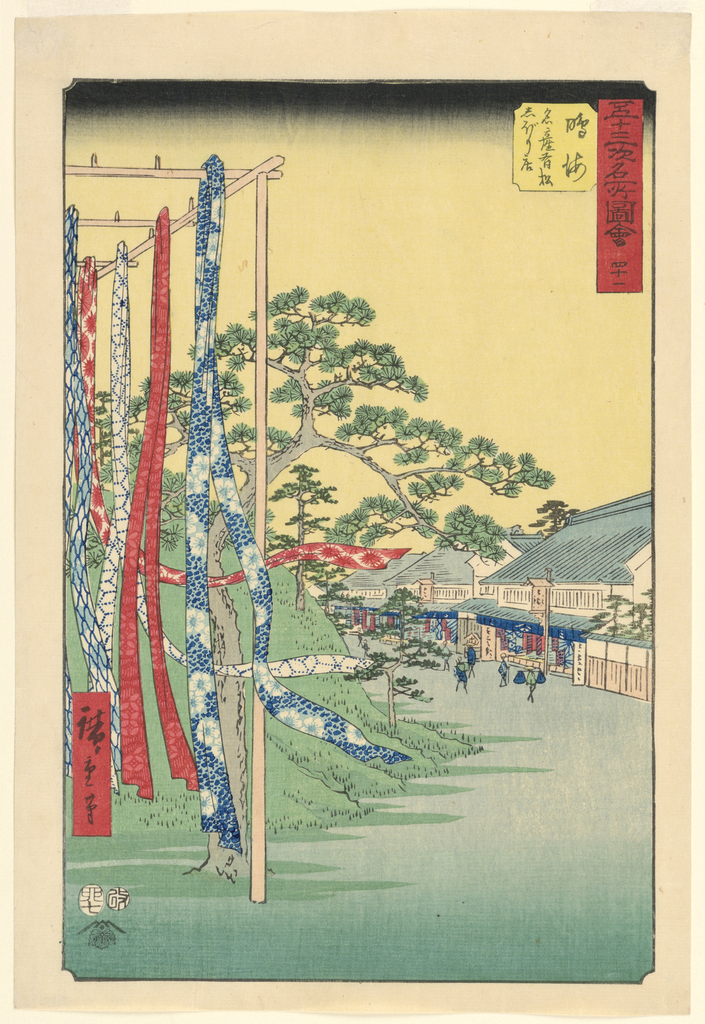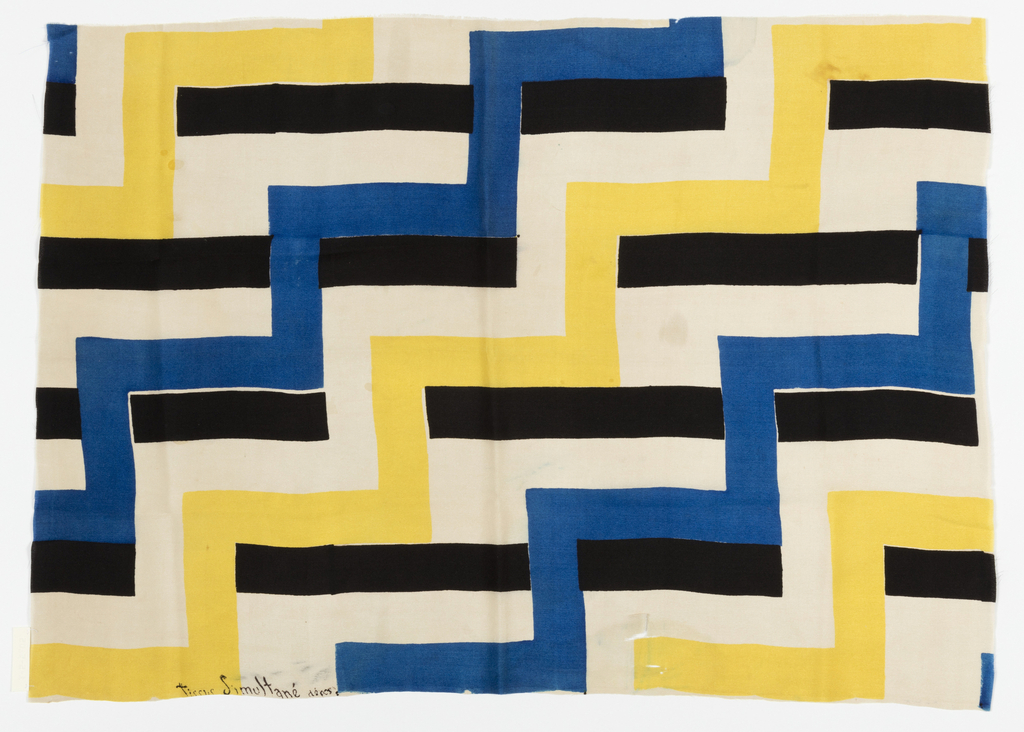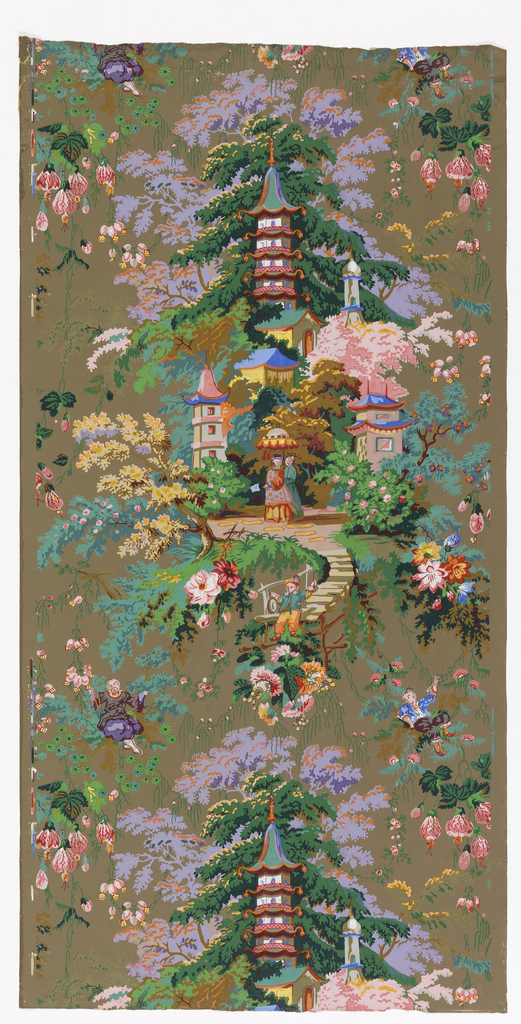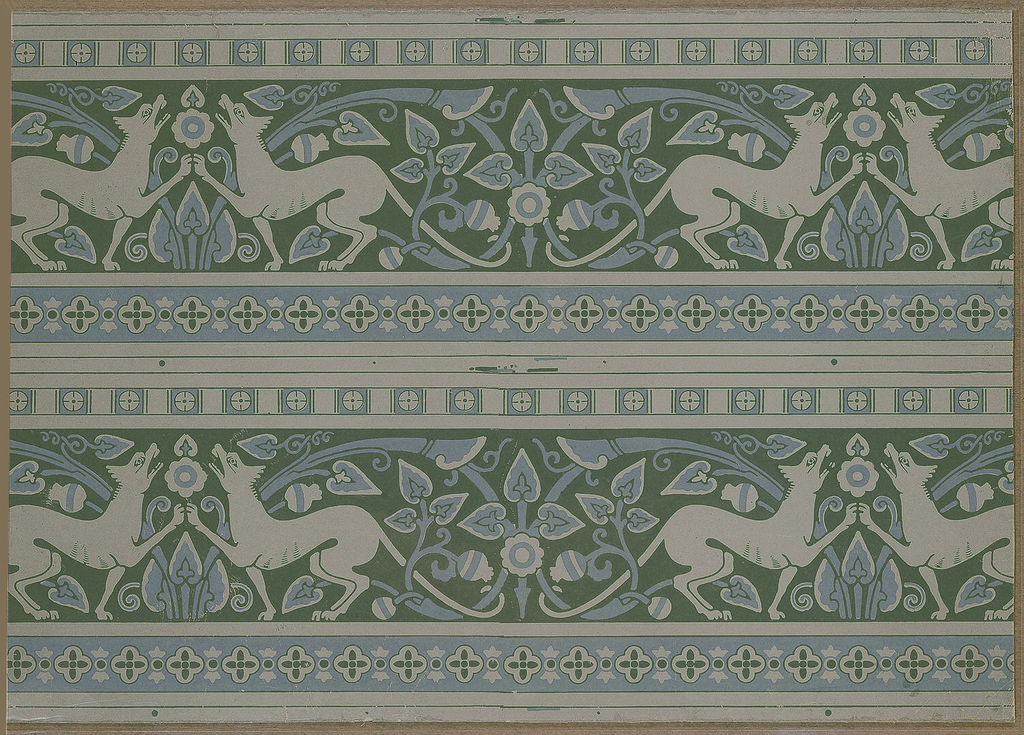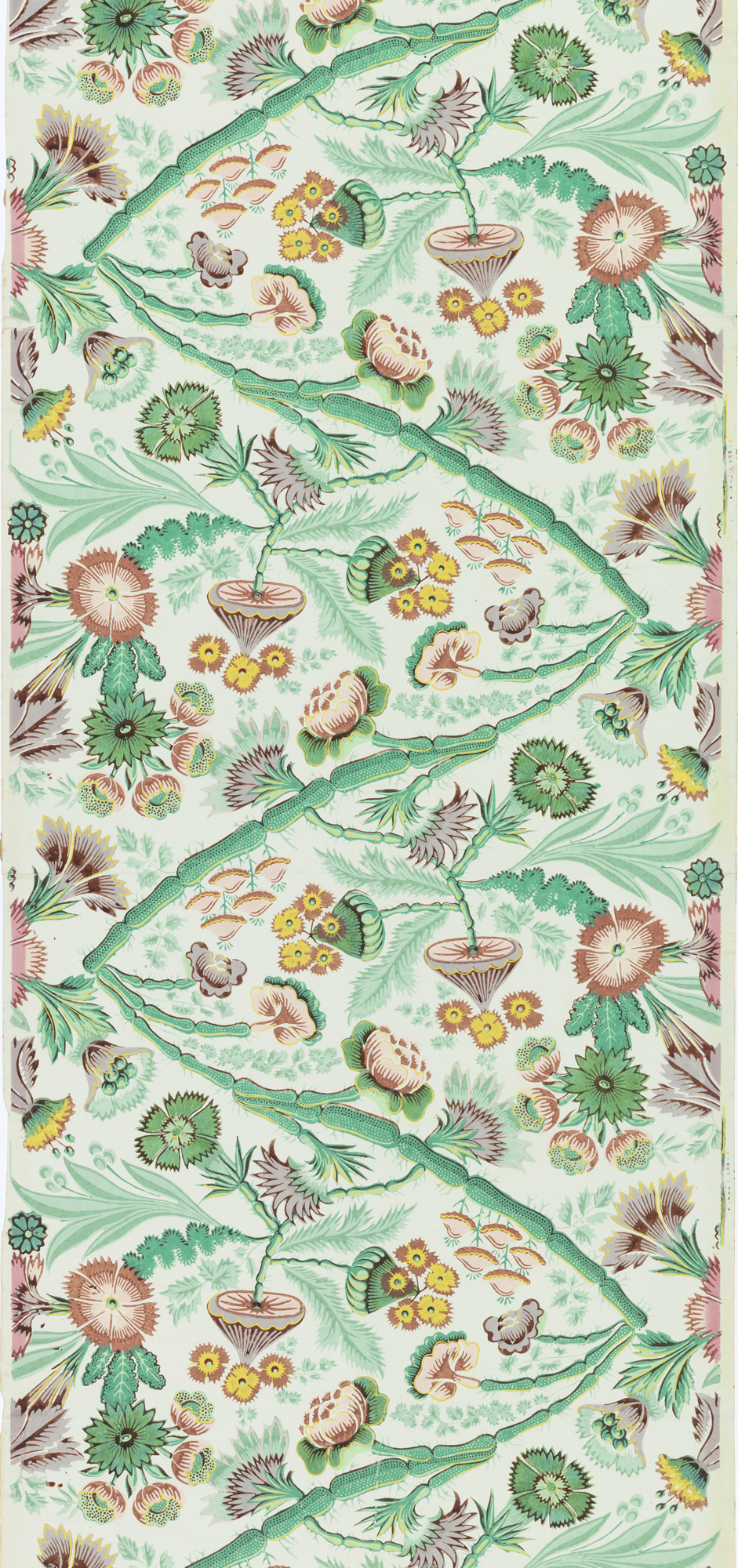Though for centuries woodblock printing had been a prevalent method of inexpensively and widely disseminating religious texts in Japan, it was not until the eighteenth century that this technique blossomed to bolster the creation of pictorial compositions, more complex and richly colored than the written documents previously published. These prints, known as ukiyo-e, are both...
Tissu simultané no. 46, a bold geometric design of blue, yellow, and black lines on a white ground, has the hallmark characteristics of Sonia Delaunay’s textiles from the 1920s: contrasting colors with abstract, geometric, or rounded patterns that are block-printed on cotton or silk fabric. In fact, she often printed the same pattern and colorway...
This beautiful sidewall is a great example of the Rococo Revival style at its most wild and vivid. Its design, a repeating landscape vignette floating in space bordered by sprays of flowers, is common in 18th century wallpapers. This paper also uses the old-fashioned technique of block-printing, despite coming from a time when machine-printing dominated...
This wallpaper shows two sections of a frieze design by the architect and designer William Burges. Known as one of the pre-eminent practitioners of the Gothic Revival style in Britain, Burges was known for his obsession with the Middle Ages, and he frequently referred to himself as a “Goth.” Perhaps his most famous works include...
This colorful 18th century English wallpaper was designed in the style of Jean Pillement, the celebrated French illustrator of chinoiserie and some-time royal painter to Marie Antoinette. The repeating pattern of flowers and foliage show Asian motifs as interpreted through a Western lense. In 1755 a folio entitled “A New Book of Chinese Ornaments, Invented...
